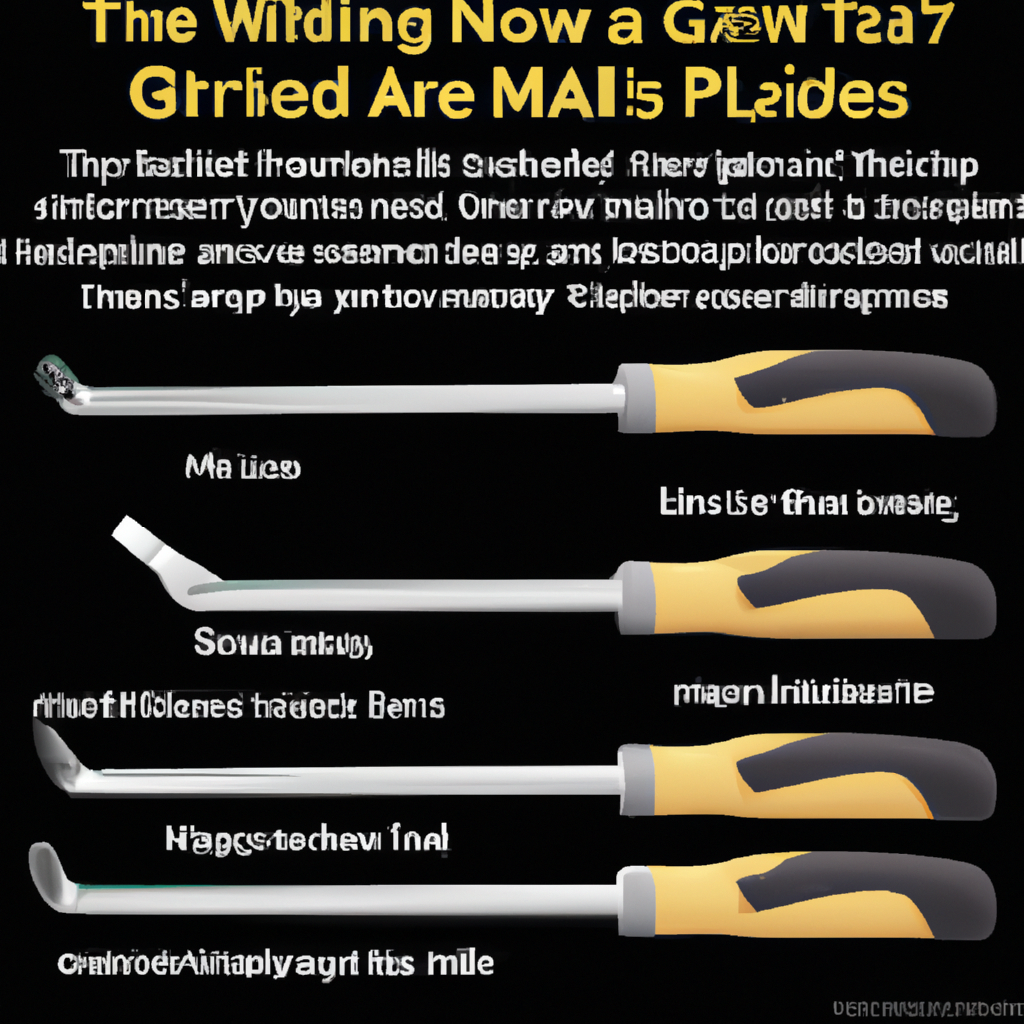We may earn money or products from the companies that may be mentioned in this post.
Are you tired of the worn-out grip on your golf club? Fear not, because in this article, you will learn the essential technique of removing a golf grip like a pro. Whether you’re a seasoned golfer or just starting out, being able to remove and replace your golf grip is a skill that every player should have in their arsenal. With our step-by-step guide, you’ll be able to effortlessly remove your old golf grip and replace it with a fresh one, ensuring a comfortable and secure hold on your club. So, grab your golf club and let’s get started on mastering the technique of removing a golf grip!
Preparation
Before you can successfully remove a golf grip, you’ll need to gather the necessary tools. You’ll want to have a utility knife or grip knife, grip solvent, grip tape, adhesive, a clean cloth, and a vise or clamp. These tools will facilitate the grip removal process and ensure that you can complete the task effectively.
Once you have your tools ready, it’s essential to choose a suitable work area. Find a spacious and well-lit area where you can comfortably work on removing the grip. A flat surface, such as a workbench or table, is ideal. Having ample room to maneuver and lay out your tools will make the process much smoother and more enjoyable.

Step 1: Assess the Grip
To start the grip removal process, take a moment to inspect the current grip on your club. Look for any signs of wear and tear, such as cracks, tears, or peeling. If the grip is in poor condition or no longer provides the necessary grip and feel, it may be time to replace it. However, if the grip is still in good shape, you may be able to reuse it, especially if you want to experiment with different grips in the future.
When considering whether to replace a grip, it’s also crucial to think about the type of grip adhesive used. Some grips are installed using double-sided grip tape, while others may have a specific type of adhesive. If your current grip uses adhesive, removing it entirely without damaging the shaft can be more challenging. Keep this in mind as you move forward with the grip removal process.
Step 2: Remove the Old Grip
Now that you’ve assessed the grip and decided to remove it, it’s time to get the grip off your golf club. Start by positioning the club with the grip facing upright. Beginning from the top of the grip, use a utility knife or grip knife to cut the grip lengthwise. This action will allow you to peel off the grip more easily.
Peel off the grip slowly, exerting gentle pressure as you move downward. Be careful not to damage the club’s shaft during this process. If you encounter any tape or adhesive residue, take the time to remove it completely. Use a clean cloth and grip solvent to wipe away any sticky residues. The goal here is to have a clean and residue-free shaft for the new grip installation.
Step 3: Clean the Shaft
After removing the old grip, it’s essential to prepare the shaft for the new grip. This step involves cleaning the shaft thoroughly to ensure maximum adhesion of the new grip. Using grip solvent, apply a generous amount to a clean cloth. Wipe the solvent along the entire length of the shaft, removing any dirt, grease, or residue that might hinder the grip’s installation.
Stubborn adhesive or tape residue may require more intensive cleaning. In this case, apply grip solvent directly to the residue and let it sit for a few minutes. Then use the cloth to scrape away the residue gently. Be patient and persistent, but avoid using excessive force that could damage the shaft’s finish.

Step 4: Let the Shaft Dry
Once you’ve cleaned the shaft, it’s crucial to allow sufficient time for it to dry completely. The grip solvent needs time to evaporate fully before the new grip can be installed. This waiting period will ensure a secure and firm bond between the shaft and the grip adhesive. Depending on the solvent used and environmental conditions, it can take anywhere from 15 minutes to an hour for the shaft to dry thoroughly. Be patient during this step to avoid any complications down the line.
Step 5: Prepare the New Grip
Now that the shaft is clean and dry, it’s time to prepare the new grip. Start by choosing the desired grip for your club. Consider factors such as material, texture, and size to find a grip that suits your playing style and preferences. Take the opportunity to experiment with different grips and see which one provides the best feel and performance for your swing.
Once you’ve selected a grip, inspect it for any defects or imperfections. Look for any signs of damage, such as cuts, tears, or uneven surfaces. If you notice any issues, it’s best to replace the grip to ensure optimal performance. Additionally, give the grip a thorough wipe down with a clean cloth to remove any dust or debris that may have accumulated during storage.
Step 6: Apply Grip Tape
Grip tape is an essential component of installing a new grip. It helps provide a secure and stable connection between the grip and the shaft. To apply grip tape, start by wrapping it around the shaft in a spiral motion. Ensure that the tape is evenly distributed and covers the entire length of the region where the grip will be placed.
While applying the grip tape, be mindful of overlapping or leaving gaps. Overlapping can result in an uneven grip, while gaps can lead to an unstable connection. Take your time when applying the tape, making sure that it adheres securely to the shaft. This step sets the foundation for a successful grip installation.
Step 7: Apply Grip Adhesive
Once the grip tape is in place, it’s time to apply grip adhesive. Choose an adhesive that is specifically designed for golf grips and shafts. This will ensure optimal bonding and longevity. Before applying the adhesive, read the manufacturer’s instructions for proper usage and safety precautions.
To apply the adhesive, gently squeeze it into the open end of the grip. Ensure that the adhesive is evenly distributed throughout the grip’s interior. Spreading the adhesive evenly will help achieve a consistent and strong bond between the grip and the shaft. Be careful not to apply excessive amounts of adhesive, as it can lead to a messy installation.
Step 8: Slide on the New Grip
With the grip tape and adhesive in place, it’s time to slide the new grip onto the shaft. Align the grip properly with the clubhead, ensuring that any alignment marks or logos are correctly positioned. Slowly slide the grip onto the shaft, exerting gentle pressure to ensure a snug fit. Take your time during this step to avoid any twisting or misalignment of the grip.
Once the grip is fully in place, give it a couple of test twists to ensure that it is secure and stable. A properly installed grip should be firm but not too tight. If you find that the grip is too loose or too tight, you may need to remove it and adjust the amount of grip tape or adhesive used. Striking a balance between a comfortable grip and a secure fit is essential for optimal performance on the golf course.
Step 10: Allow the Grip to Set
After installing the new grip, it’s important to give it sufficient time to set and bond with the shaft. This step is crucial to ensure that the grip remains secure during your swings. Respect the manufacturer’s recommended setting time, which is typically 24 to 48 hours. Avoid using the club immediately after installing the grip to allow the adhesive to fully bond.
By patiently waiting for the grip to set, you’ll be rewarded with a reliable and long-lasting connection between the grip and the shaft. Rushing this step can compromise the effectiveness of the adhesive and lead to premature grip failure. Take this time to rest, do some research on grip techniques, or practice your swing in anticipation of using your newly installed grip on the golf course.
In conclusion, removing and replacing a golf grip is a straightforward process that can greatly enhance your golfing experience. By following the steps outlined above, you’ll be equipped with the knowledge and skills necessary to successfully remove and install a new grip on your golf clubs. Remember to gather the necessary tools, choose a suitable work area, and take your time during each step of the process. With a firm and comfortable grip, you’ll be well on your way to mastering your golf swing and improving your performance on the course. Happy gripping!
